The 22 Weirdest Military Weapons
Let your imagination run wild
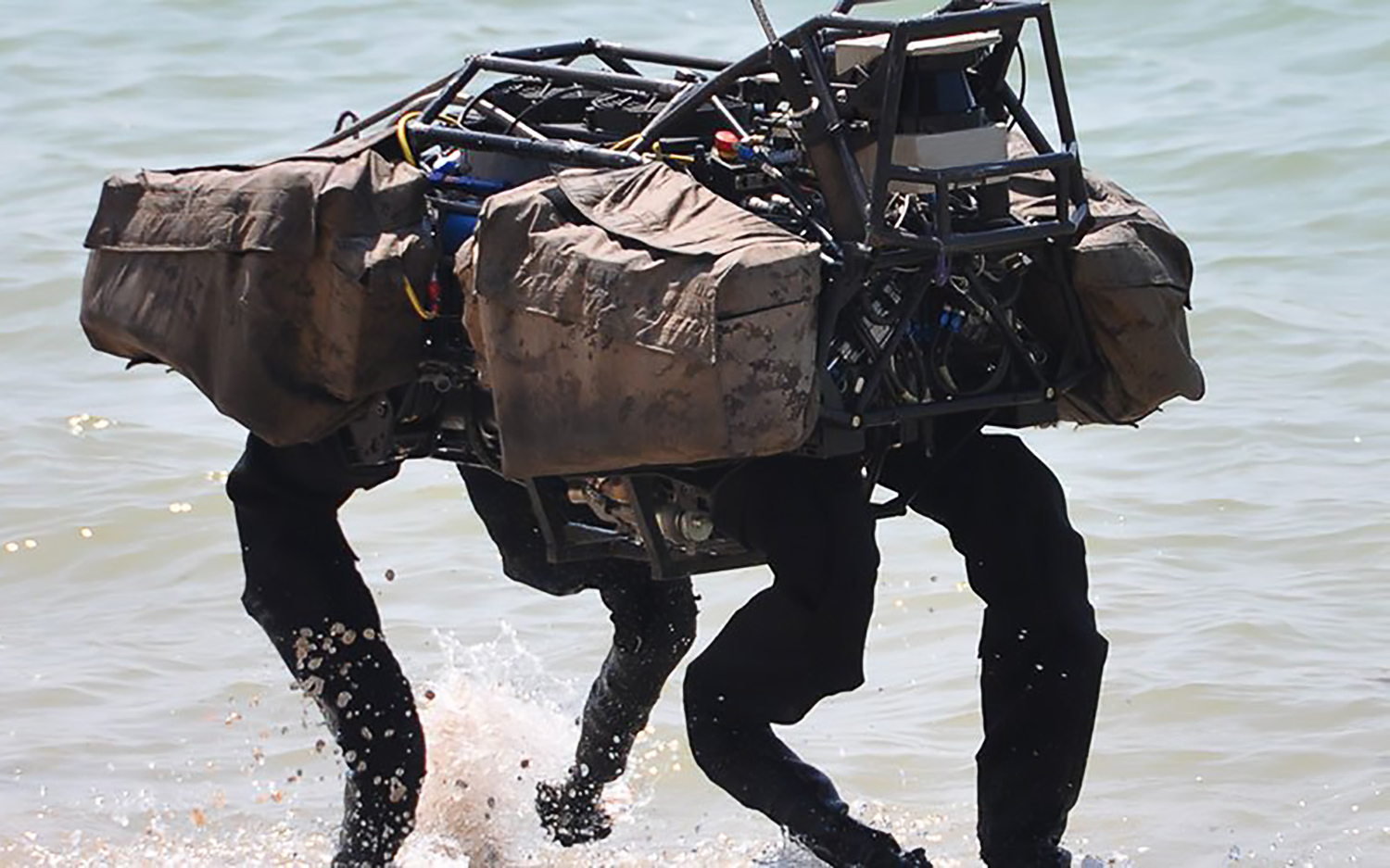
If you can imagine it, someone, somewhere has tried to weaponize it. Humans have been trying to kill each other for our entire existence as a species, and in that time, we've developed a lot of clever and outright silly ways to accomplish that goal. From lightning bolts to dolphins, here's a list of some of the most outlandish and bizarre military weapons ever dreamed up.
Robot dog
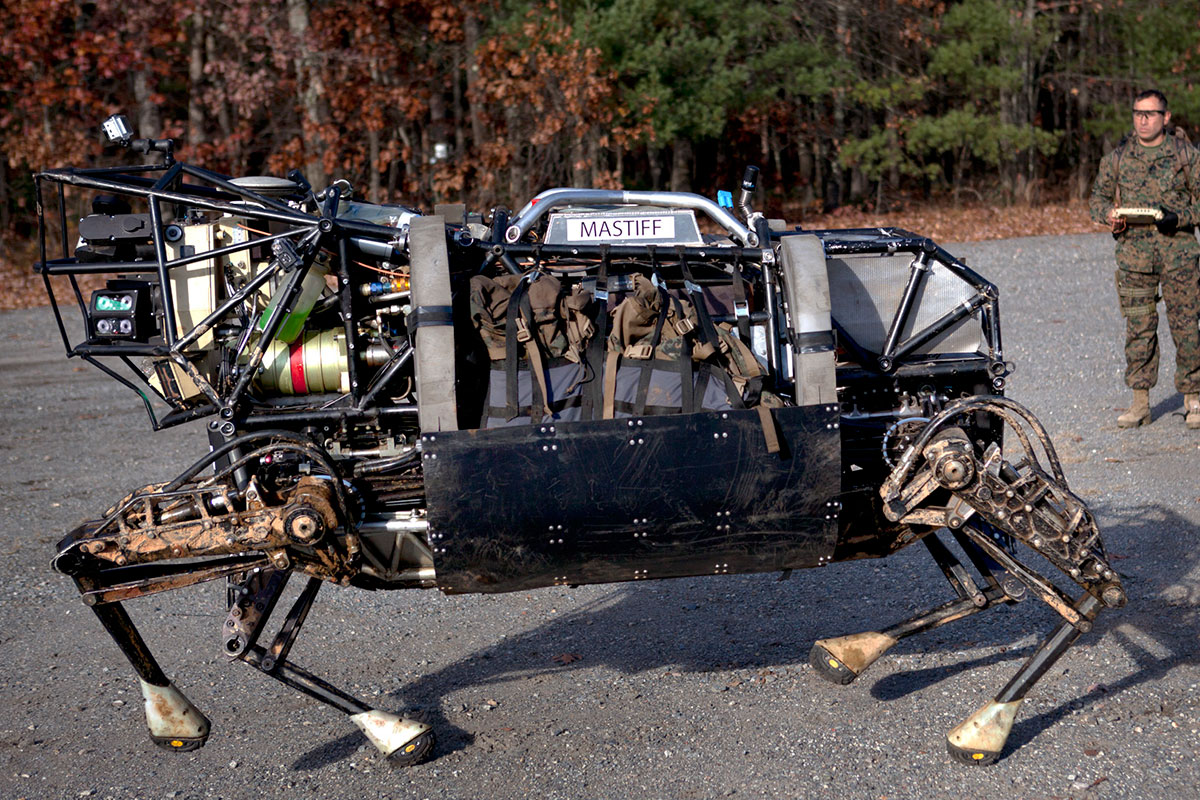
While dogs are routinely used in war for tasks like bomb-sniffing, the military has also taken inspiration from Fido to build robots. Enter the "Big Dog," a robotic creature built by the company Boston Dynamics. The large, rough-terrain robot shambles slowly up rocky terrain while carrying heavy loads, and is currently being tested in Afghanistan. The robotic beast sounds like a swarm of bees, and its mincing gait makes it look more like a show poodle than a truly large dog, meaning it's probably not all that stealthy or fast. But the goal of the 240-lb. (109 kilograms) behemoth isn't to be quiet or quick; it's to carry about 100 lbs. (45 kg) so troops don't have to shoulder their own loads. However, in 2015, the military seemed less enamored of the idea, saying the size and noise would give away soldiers' positions, according to Military.com.
Eye-blinding rifle
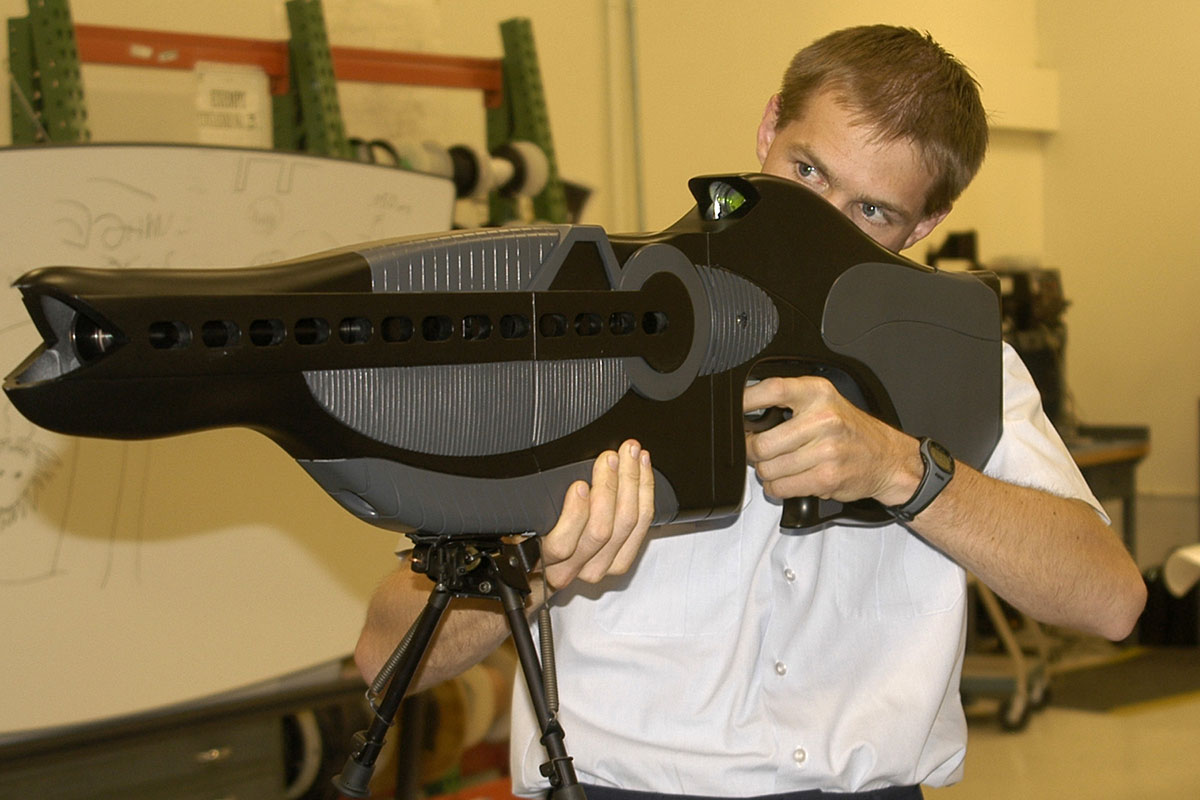
This weapon won't kill you; it will just blind you with its bedazzling laser beam. The PHASR, or personnel halting and stimulation response rifle, is essentially the equivalent of a gazillion laser pointers aimed at the eyes, designed to lead to only temporary blindness. The goal is to blind criminals or others who mean harm for long enough that they can be apprehended. However, the PHASR has one problem: The United Nations banned blinding weapons in 1995, according to an addendum to the Geneva Conventions.
Laser-induced plasma channel

Move over Thor — the military has stolen your thunder (and lightning). Engineers at the Picatinny Arsenal in New Jersey have figured out a way to harness the power of lightning, designing a weapon that shoots lightning bolts along laser beams to kill targets. The laser-induced plasma channel, as it's called, is aimed at targets that conduct electricity better than the air or the ground, according to a press release. The laser light, with its high intensity and energy, focuses the lightning bolt to keep it along a straight and narrow path, so it can be precisely aimed at a target, according to the release.
Pulsed energy projectile
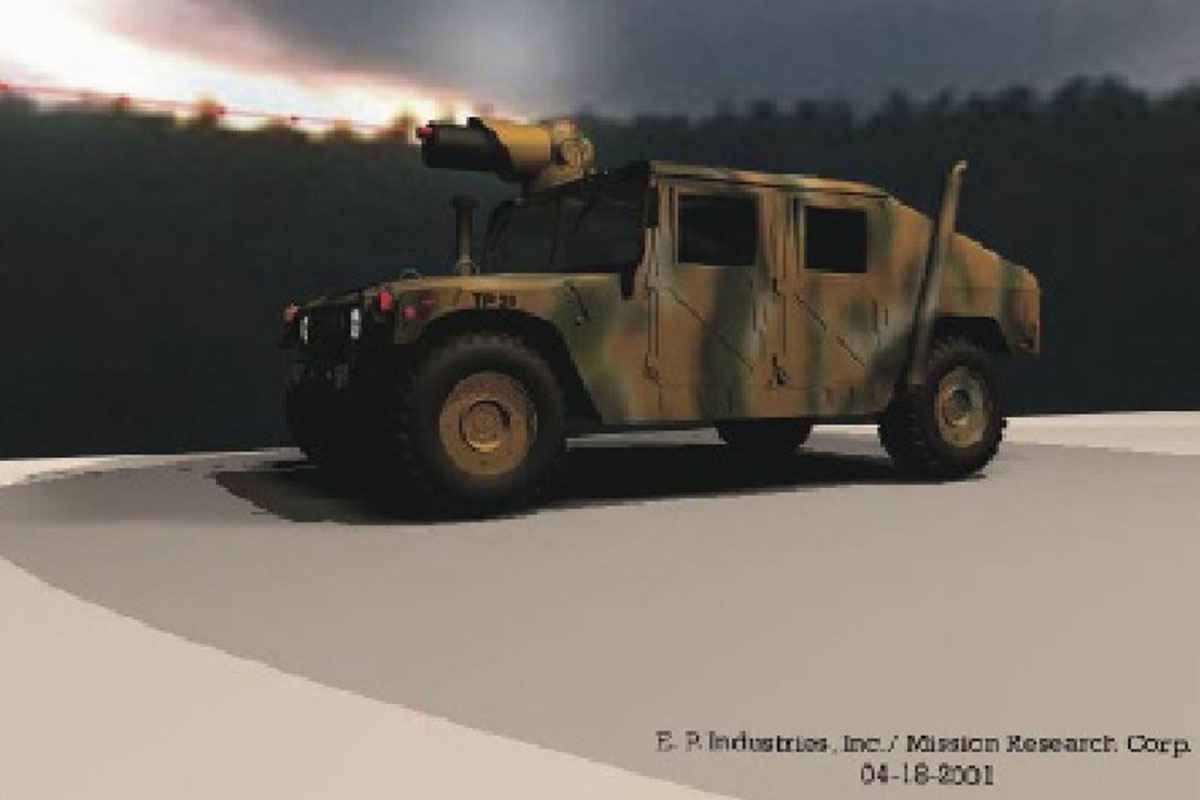
The pulsed energy projectile is yet another nonlethal weapon under development by the U.S. military. The goal? Fire a laser at people to create a little pocket of exploding plasma in the air around them. This would hypothetically create a pressure wave to knock out the person, also producing painful nerve sensations, according to Globalsecurity.org.
Pigeon-projected missiles
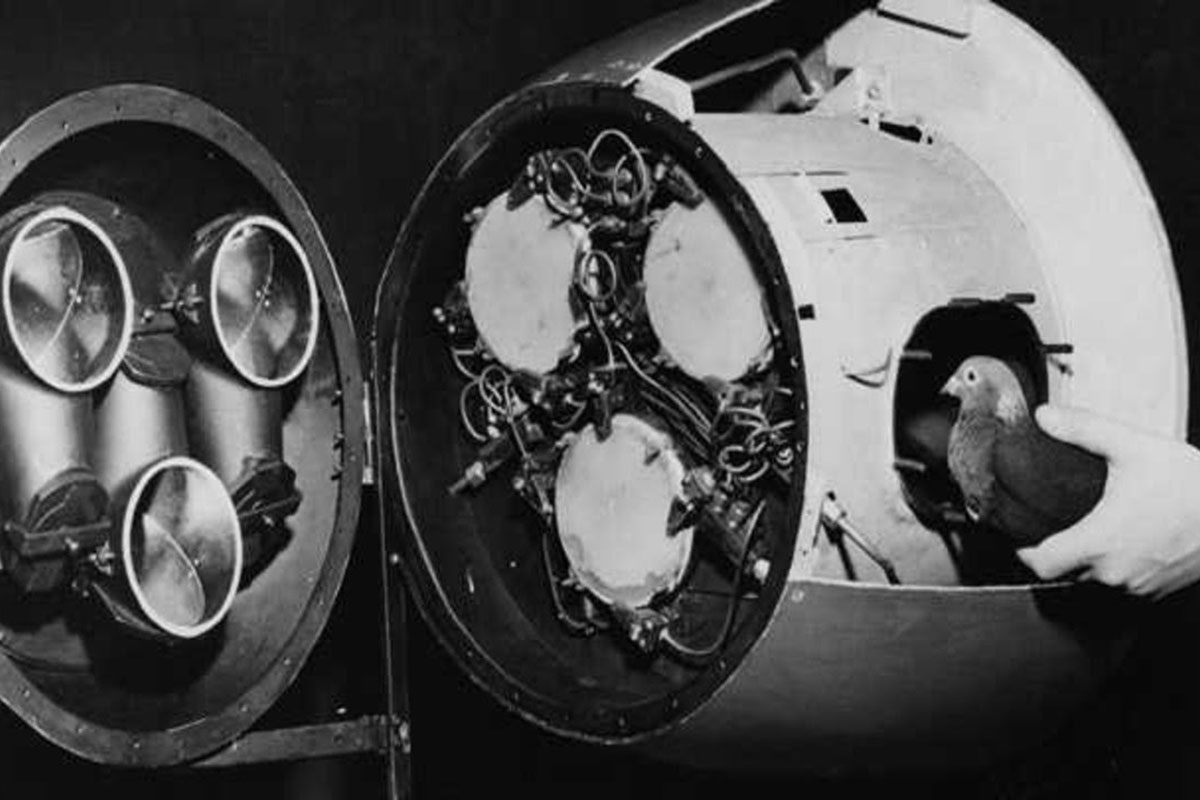
Bats weren't the only animals recruited to the war effort. Another project, called Project Pigeon, was an effort to create a pigeon-guided bomb. The birds were trained using B.F. Skinner's operant conditioning to hone in on a target shown on a screen and then peck at it when they found it. The program was scrapped in 1944 and then revived in 1948 under the name Project Orcon, but eventually, newer electronic guidance systems proved to be more valuable. An exhibit at the American History Museum in Washington, D.C., details the history of this avian instrument of war.
Bat bombs
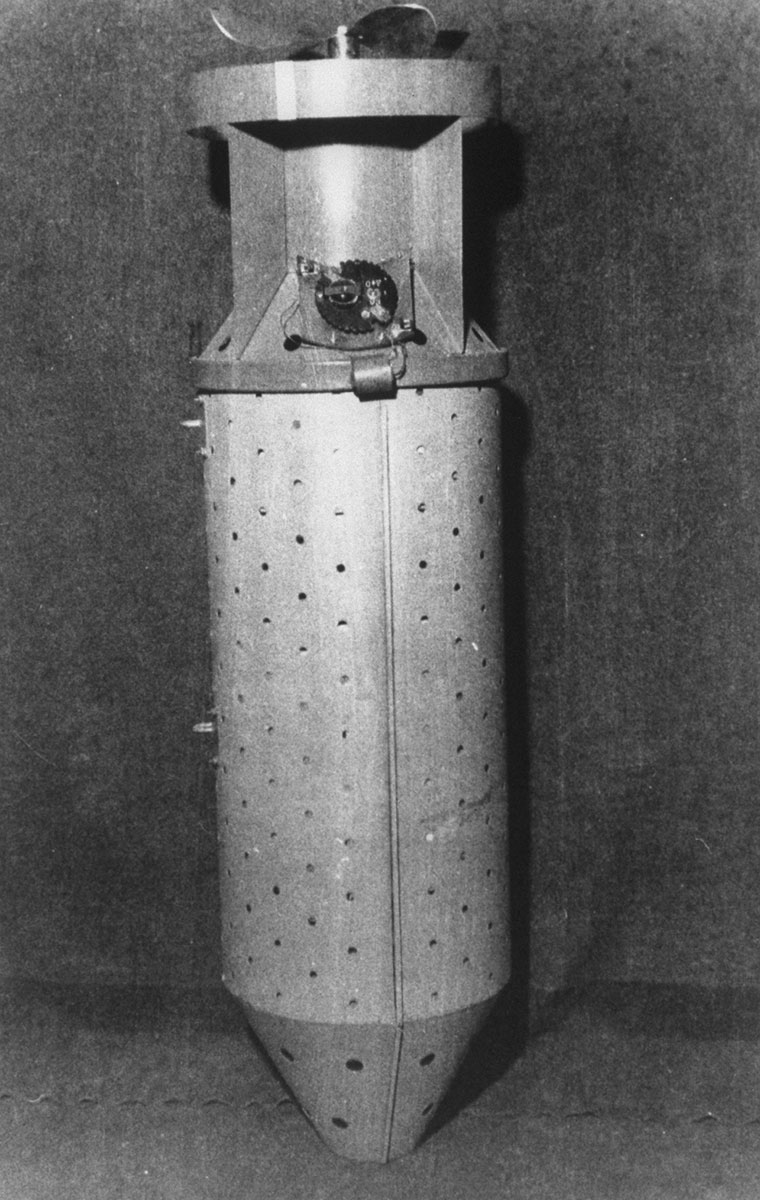
In World War II, the U.S. Marine Corps had an ambitious idea: Train bats to be the kamikaze bombers that the military didn't want humans to be. A Pennsylvania dentist first proposed the idea, inspired by the bat-infested caves at Carlsbad Caverns in New Mexico. The idea? Load the bats with explosives, and train the animals to use their echolocation to find targets. While the military used thousands of free-tailed bats in experiments, officials eventually scrapped the plan when the atomic bomb seemed more promising, Live Science previously reported.
Soviet attack dolphins

The Soviet Union was also very interested in harnessing animals for warfare. The killer animal in this instance? War dolphins. The project, developed in the 1960s, aimed to train dolphins to search for submerged warheads or other items, according to the Sevastopol State Oceanarium, Live Science previously reported. But Russia isn't the only country training dolphins for war; the United States has its own dolphin-training program, though the adorable marine mammals are not trained to carry weapons or kill people, because they'd have trouble distinguishing between enemies and friendly soldiers, according to the website for the U.S. program.
Chicken nuclear weapons
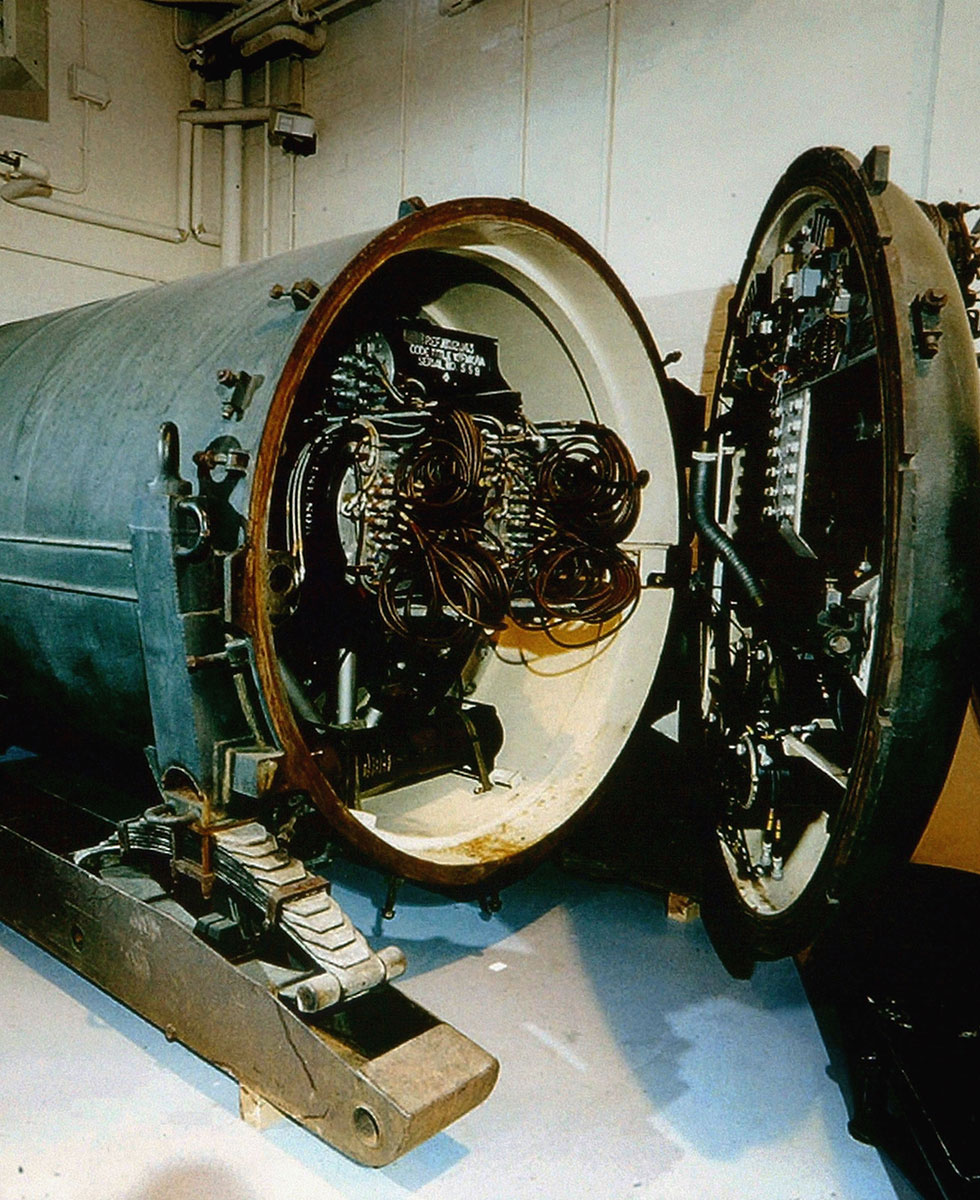
During the height of the Cold War, the British devised a 7-tonne (8 tons) nuclear weapon called Blue Peacock, a massive nuclear mine to be placed in Germany that could be detonated if the Soviets decided to invade from the East. One problem? The ground gets really, really cold in winter, making it hard for all the equipment in the mine to work. So, one outlandish proposal (along with wrapping the machinery in fiberglass pillows) was to heat the nuke with chickens, who would have been encased in a shell and given enough food, water and oxygen to survive for a week. The heat generated by the chickens could keep the project warm enough to function. Ultimately, the plan was scrapped because of the risk of nuclear fallout, according to the BBC.
Kill-proof human soldiers

One way to make a deadlier fighting force is to create an invincible one. Defense Advanced Research Projects Agency has long been working on projects to make soldiers "unkillable," or more able to survive assaults, maintain endurance for long periods and withstand extreme environmental challenges. One project, called Inner Armor, looked at the genetic adaptations that allow other species, such as harbor seals and archaeobacteria, to travel for days without stopping, survive underwater with little oxygen, or recover from radioactive or chemical weapons without getting sick. The goal? Either manipulate neural pathways or give people special "vitamins" that could protect against such assaults, according to a 2007 presentation on the project.
Hallucinogenic artillery rounds

Weapons don't always have to injure the body; sometimes, they can incapacitate the mind. In the 1950s, the Central Intelligence Agency investigated the use of psychoactive substances such as LSD under the agency's notorious MKUltra project. One of the "nonlethal" weapons the CIA developed was the BZ bomb, a cluster bomb filled with the hallucinogen 3-quinuclidinyl benzilate. One army recruit who underwent experiments with the substance described experiencing some bizarre dreams, as well as feeling restless, having trouble focusing and suffering headaches. The plan was ultimately scrapped because BZ's effect on the psyche was not reliable, according to an article in the Quarterly Journal of the Harvard Sussex Program on CBW Armament and Arms Limitation.
Sign up for the Live Science daily newsletter now
Get the world’s most fascinating discoveries delivered straight to your inbox.

Tia is the managing editor and was previously a senior writer for Live Science. Her work has appeared in Scientific American, Wired.com and other outlets. She holds a master's degree in bioengineering from the University of Washington, a graduate certificate in science writing from UC Santa Cruz and a bachelor's degree in mechanical engineering from the University of Texas at Austin. Tia was part of a team at the Milwaukee Journal Sentinel that published the Empty Cradles series on preterm births, which won multiple awards, including the 2012 Casey Medal for Meritorious Journalism.
US company to use giant spinning cannon to blast hundreds of pancake-like 'microsatellites' into space
New urinal designs could prevent up to 265,000 gallons of urine from spilling onto the floor each day
Wilkes Land crater: The giant hole in East Antarctica's gravitational field likely caused by a meteorite










